Fresh Egg's Brilliant Seven Point Content Strategy Template
By Intern |11 Dec 2015
At Fresh Egg, our experience is that a great content strategy is founded on an undertanding of audience, business needs and amplification. And the more research and planning you can perform to develop this understanding, then the more likely you are to get the results you want.
With this in mind, here’s our template for writing a great content strategy. There are seven elements which chime nicely with our overall approach to digital marketing: they are the the concept, research, planning, reporting, refinement, brilliance and the idea.
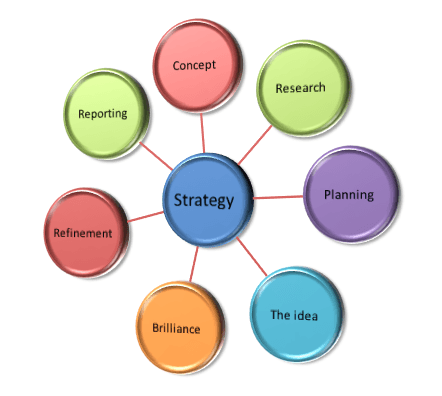
What is a content strategy?
First, just what is a content strategy? Seems like an obvious question, but do you have simple answer?
Google has scraped Wikipedia and finds that:

The Content Marketing Institute points out that a content strategy and a content marketing strategy can be seen as related, but different entities:
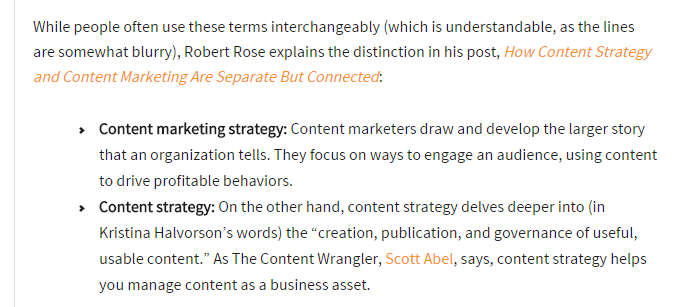
For the purposes of clarity, when Fresh Egg discusses ‘content strategy’ in this post, we are pulling in both of the above definitions. That is, determining the wider story, and how you engage your audience, as well as ‘the creation, publication, and governance of useful, usable content’.
1. The concept
Conceptually, a content strategy should provide information to answer some or all of these questions:
- What is our business?
- What does it stand for?
- What do we need to tell our audience about ourselves and our business?
- Who are our customers?
- What information do they need?
- When and where do they need this information?
- What is it we want our content strategy to achieve?
So, how do you answer these questions?
2. Research
What research should go into a great content strategy? Taking your understanding of your business and its USPs for granted, the most critical research you can carry out is that which will help you understand your audience. And the better you understand them, the better your content strategy will perform.
But what does understanding your audience really mean?
For Fresh Egg, it’s about gaining an understanding of their motivations – what drives them, what information do they need and want, and how do they want to consume information?
The research for this audience information can come from any number of sources:
- Your business may already have detailed audience research
- Existing analytics data
- Google Analytics Demographics and Interests data
- Referral traffic sources
- Interviewing your customer facing staff
- Data collection
- Competitor research
- Search behaviour and intent
- Trending data
- Customer surveys and polls
- Understanding related trigger and life events (the real world in people's lives that cause them to need a product or service)
At Fresh Egg, our journey to a content strategy begins in our discovery process, with our own Audience Intent research. Read our post, how an audience-led approach drives digital marketing success, to understand more.
And here are some of the free tools we use most often to gather information to guide strategies:
- Buzzsumo (some free functionality, but best results come with the paid version)
- Answerthepublic.com
- Google AdWords Keyword Planner
- Google autosuggest (just start typing in Google!)

- Google Trends and Correlate
- Google Search Console
- Ubersuggest
Another aspect of research is finding out what any competitors are doing, and how well they are doing it. Just do a bit of manual research to find out.
To find competitors, don’t narrowly think about your business sector. Type in the sort of search terms your audience may well use and you will get an idea of who you are competing in search engines with… you could get a surprise.
Then, use this information and the content these sites are publishing to help drive your strategy.
3. Planning
Having a plan is essential. It’s what turns your ideas, research and concepts into reality. And how you plan your content will have a huge impact on your work.
The key is to plan your content with all of the elements necessary to ensure the content performs to its maximum, and to ensure that you have the resources available to achieve your content strategy to the required standard in the time available.
Make no mistake, creating content of the required standard takes a lot of time. Each piece of content required by your strategy should be well researched and executed. And there are no shortcuts.
You should always aim for the quality of your content to be better than anything your competitors are doing – whether that be the nature of the idea, its execution, or the quality of the information imparted. And hopefully all three!
What does this mean practically?
Getting each element of your content right is crucial to its success, and Fresh Egg has a number of resources to help you out here.
For your blogging activity, we’ve created a great checklist to help you ensure your posts get maximum traction, and are published and repurposed in the most efficient manner.
Our Ultimate Blogging Best Practice Checklist helps ensure you have considered all aspects of blog publishing, from calls to action (CTAs) and linking to research and structure.

Download our essential guide here.
For a wider plan to cover all of your content marketing activity, Fresh Egg has its own Content Marketing and Social Planner, which will help plan every facet of your content strategy.
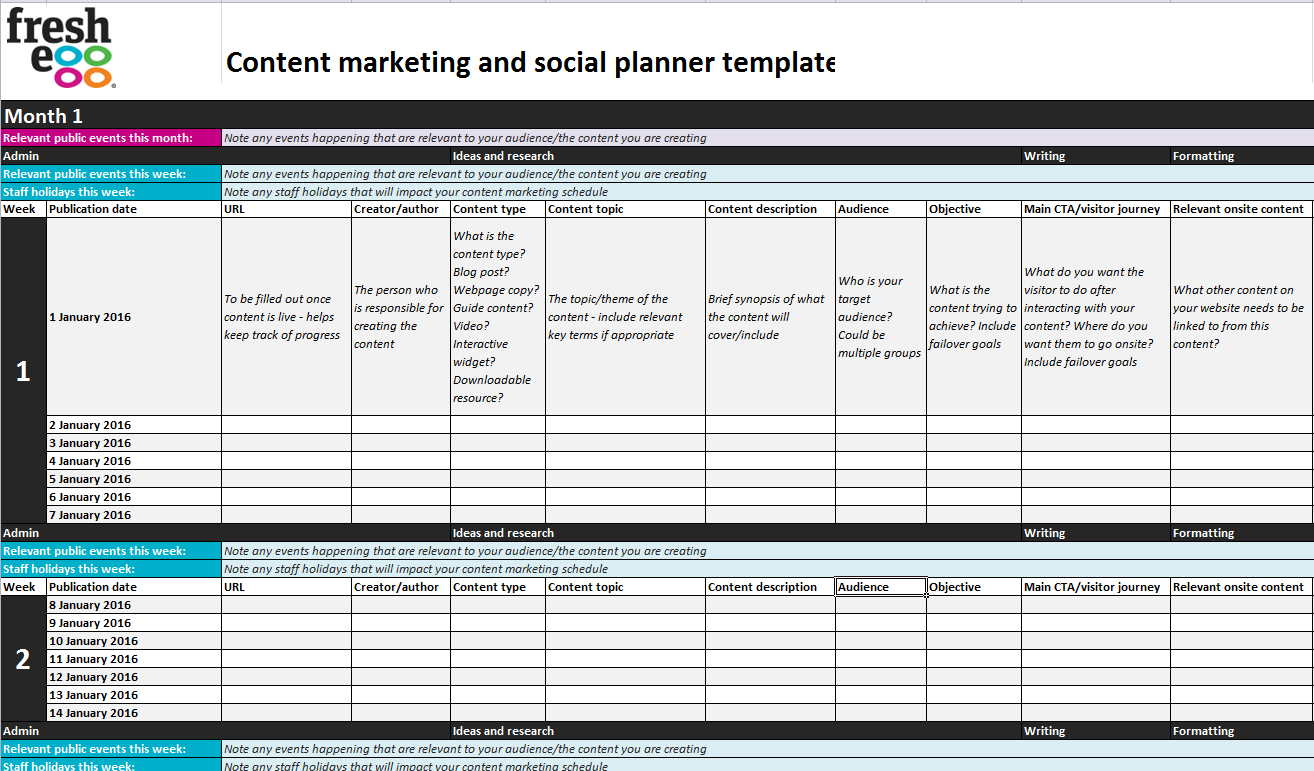
Our planner covers all the important aspects of content marketing, including ideas and research, writing, formatting, content types, amplification, measurement and repurposing.
Download it here to give your content strategy planning a boost.
Amplification
Amplifying, or promoting, your content is an essential part of any content strategy. You can't just publish and hope they will come. Content amplification is a subject in it's own right, and we'll have more on this in later blog posts.
For now, it just has to be said that if you are not planning to put your content in front of your audience offsite, then you only have half a strategy. Consider all the channels:
- Social
- Paid social
- Paid search
- Display
- Offsite content
- Inbound campaigns
- Native advertising
- Content amplification platforms
- Content repurposing for media-led platforms such as slidedeck
4. Reporting
Reporting can be an afterthought in a content strategy, but that’s a mistake. If you truly understand what you are trying to do with each post, then the way you measure success will be apparent. And, in fact, putting in place a plan to measure the success of any individual piece of content will really help you clarify what it is you are trying to achieve with it.
For example, if you are writing a blog post to drive brand engagement and visibility, then you might want to be reporting on impressions, social shares and referral traffic as key metrics.
For a wider content strategy, you really need a measurement plan in place, and, luckily for you, Fresh Egg has again got a brilliant resource for you – our measurement plan.
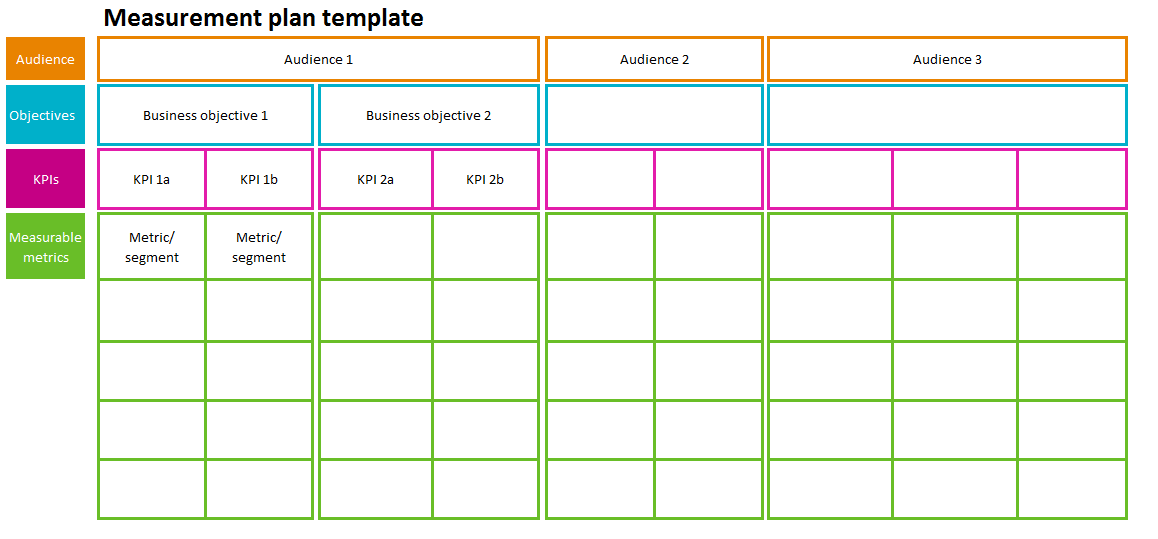
Benchmarking and setting expectations
A key aspect of producing a content strategy is selling it to stakeholders and managing expectations.
It’s a great idea to benchmark any existing content performance, and then plan for long-term and steady growth.
You may think it a good idea to tell everyone your content strategy will recoup its investment in the first six months, with amazing site growth, but it rarely happens like this.
The safest route is to plan for slow organic growth of your content, greater user engagement and conversions, and to emphasise the lifetime value of your content.
If a piece of content drives a conversion a month for five years, then, in most businesses, it will have paid for itself many times over.
And a typical pageviews growth pattern for really good new content looks something like this:

5. Refinement
Refinement is a crucial aspect of getting the most out of your content strategy – and data analysis is the key here.
Understanding what your data are actually telling you, and then making changes to your strategy based on that understanding is a key skill.
In essence, the ways in which you can demonstrate content can vary enormously. Because of this, you have to be able to take in a wide variety of data sources, and sometimes even not your primary planned metrics, to get a true sense of the value of a piece of content.
It is a wise idea, then, to periodically have an audit of all your content across all of the metrics available to you. This way, you can be sure to not miss a trick. For example:
- You may have published a piece of content that is not being widely shared, nor indeed driving organic traffic, nor impressions
- But, digging a little deeper, and looking into the referring traffic, you find an amount of traffic is being driven from a site you are unaware of
- On further inspection, you discover that you have gained a follow link from a high authority site, and although it is not driving much traffic, the link will be positively contributing to your backlink profile
Armed with this knowledge, you can do a number of things:
- Try and discern what it is that about the content that drove someone to place a link
- Try a similar approach to new content
- Make similar sites aware of the content, to see if they would link to it
There are myriad ways of analysing your content and finding ways it is helping. The moral here is don’t just look at the primary metrics you are measuring based on your planner. Periodically look a little deeper to find the hidden jewels.
You’ll need to gain an in-depth understanding of your analytics package, of Search Console and of other SEO tools to do this – but taking control of measuring the performance of your own content is very satisfying, and will help your strategising enormously.
6. Brilliance
Content strategists know that with all the planning in the world, finding the content that will drive most of your positive results is as much a case of it being in the right place at the right time, as of planning and research. Hitting that sweet spot of organic visibility, share-ability and timeliness is as much of an art as it is science.
But here’s the rub… you will only be in the right place at the right time if you do the research and planning.
But, an often overlooked aspect of generating results, is simply being brilliant. This means:
- Don’t follow the crowd, lead it
- To do this, you need to know your topics, and their influencers, inside and out
- Generate new, fresh and interesting ideas
- Ensure your content has more detail, depth and credibility than anyone else’s
- Leverage the brilliance of others
- Get the best writers and creatives you can afford
- Expect very high standards from yourself and your team
Tips for being brilliant
How do you get your creative juices flowing, so you can inspire brilliance in yourself, or others? Well, again, there are things you can do to help:
- Brainstorming: It’s an overused word, but the essence of which is very useful. Just do it in a properly structured manner, and don’t end up sitting in a room full of people shouting ideas at each other
- Stealing: No, not literally, but emulating the best in your field is a good idea. And make the most of this work by trying to pull influencers into your work . And always, always, always credit ideas if you use them in your content
- Keeping on top of your subject: Obvious, but learn everything you can about the marketplace your strategy will be working in
So there we are, there’s my quick dip into content strategy… it’s a huge subject, so please consider this post as being just a primer. Keep an eye out here for more great posts about content marketing.
7. The idea
The last element is oftent he hardest part of a strategy... the idea. That is, what is the easiest way to communicate what you are trying to do with your strategy to stakeholders.
It could be a single image, a brilliant sentence, a two deck Powerpoint. In fact, the more creatively and attractively you can get your idea across, the more likely you are to have buy in. (Nothing kills a content strategy presentation more than poor creative, for obvious reasons)
Here's a Fresh Egg example... we needed to get across what we were trying to do for a client in a single image: and this graphic was the result.
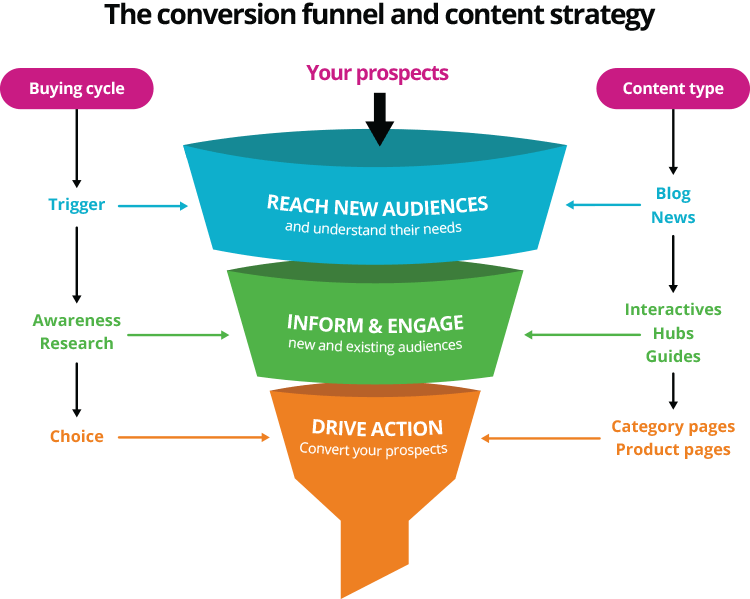
It includes the key phrases the client needed to here, and the essence of what we were telling them would work.
Put time and effort into your strategy idea, and it'll smooth the way to getting the buy-in you need.
If you have any content strategy needs that are not being met, then please contact us to see how we can help your business. We have great case studies to prove how our strategies work.